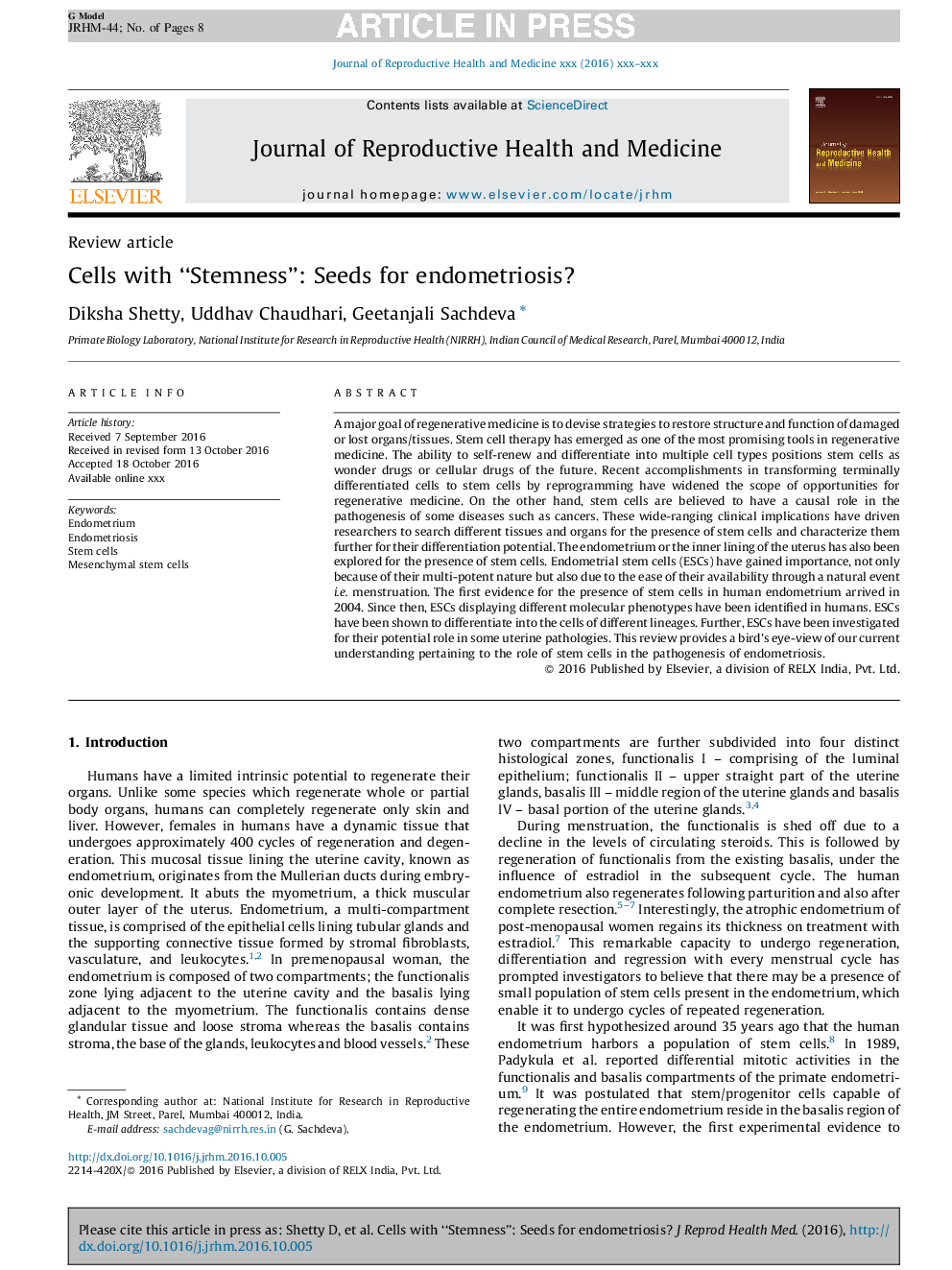| Article ID | Journal | Published Year | Pages | File Type |
|---|---|---|---|---|
| 5654249 | Journal of Reproductive Health and Medicine | 2016 | 8 Pages |
Abstract
A major goal of regenerative medicine is to devise strategies to restore structure and function of damaged or lost organs/tissues. Stem cell therapy has emerged as one of the most promising tools in regenerative medicine. The ability to self-renew and differentiate into multiple cell types positions stem cells as wonder drugs or cellular drugs of the future. Recent accomplishments in transforming terminally differentiated cells to stem cells by reprogramming have widened the scope of opportunities for regenerative medicine. On the other hand, stem cells are believed to have a causal role in the pathogenesis of some diseases such as cancers. These wide-ranging clinical implications have driven researchers to search different tissues and organs for the presence of stem cells and characterize them further for their differentiation potential. The endometrium or the inner lining of the uterus has also been explored for the presence of stem cells. Endometrial stem cells (ESCs) have gained importance, not only because of their multi-potent nature but also due to the ease of their availability through a natural event i.e. menstruation. The first evidence for the presence of stem cells in human endometrium arrived in 2004. Since then, ESCs displaying different molecular phenotypes have been identified in humans. ESCs have been shown to differentiate into the cells of different lineages. Further, ESCs have been investigated for their potential role in some uterine pathologies. This review provides a bird's eye-view of our current understanding pertaining to the role of stem cells in the pathogenesis of endometriosis.
Related Topics
Health Sciences
Medicine and Dentistry
Emergency Medicine
Authors
Diksha Shetty, Uddhav Chaudhari, Geetanjali Sachdeva,
